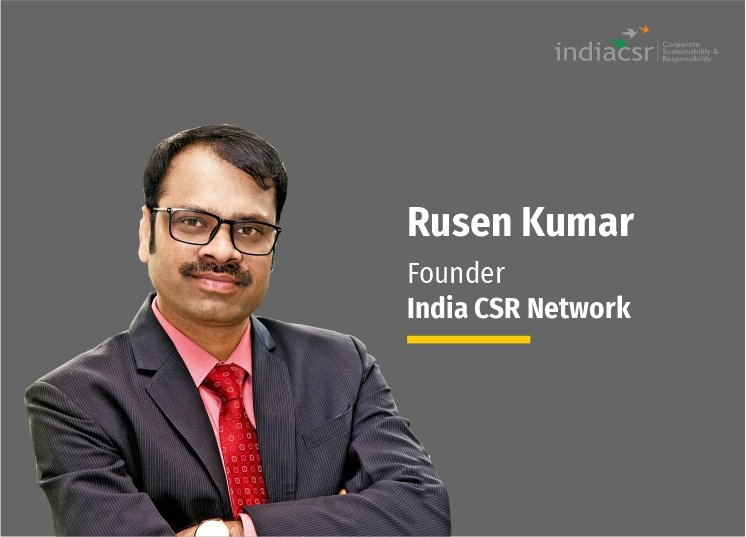
RAIPUR: Sampark Foundation started and funded by Vineet Nayar, Former CEO of HCL Technologies, and his wife Anupama Nayar, has partnered with Government of Chhattisgarh to support state’s Sarva Shiksha Abhiyan (SSA), a Pan India ambitious programme operational since 2000-2001 with aim to provide variety of interventions for universal access and retention, bridging of gender and social category gaps in elementary education and improving the quality of learning.
With an investment of Rs 60 crore from Sampark Foundation, the smart class programme has come up with several innovations particular in mathematics education. Sampark Smart Class is a learning outcome focused on frugal innovation that uses technology, a voice mascot ‘Sampark Didi’, toys, folklore, games and trainer’s training modules combined with rigorous monitoring. It is its own kind of unique NGO and Govt. partnership in the state in the area of primary education.
The project, being implemented by Sampark Foundation, aims to ensure that 80% of children are able to do basic maths such as addition, subtraction, multiplication and division and to use at least 500 new words to speak and write in English after a year of implementation.
More than 63,000 teachers are getting training to teach Maths and English language with learning kits, which are being distributed in all the schools.
Under the smart class programme an audio device assists the teacher in teaching of English and Maths. Combined with music, 240 audio lessons with stories and games helps to make learning to bring about change in the lives of more than 32 lakh children in more than 32,000 primary level government schools.
As per a report, a pilot programme by Sampark Foundation was implemented in 2014 across class 1 and 2 in 250 govt primary schools of Rajnandgaon and Kawardha districts for capacity building of teachers through new pedagogical practices and orientation on approach and curriculum based on Maths kit, development of nodal cluster schools and conducting monthly interaction with teachers.
In the country, every child has fundamental right to read and learn wherein every citizens has a fundamental duty to provide opportunities for education to his every child ward between the age of six and fourteen years.
According to M Sudhish, Asst. Director -Sarva Shiksha Abhiyan, Govt of Chhattisgarh, In Chhattisgarh 19.74 lacs students are enrolled in primary school and 12.80 lacs students are enrolled in upper primary school for the year 2015-16 in more than 32,000 government schools.
SSA is a partnership between central and state is 60:40 ratio to cover the entire country and address the needs of 192 million children in 1.1 million habitations. In Chhattisgarh, SSA in operational since year 2002-03.
SSA is being run with the strong infrastructure and robust network of State Project office, District Project Office, Block Resource Centre, Cluster Resource Centre and School Management Committee at village level.
SSA also works with external organizations and encourage NGO and Corporate partnerships. Last year, Chhattisgarh worked with different industries for the construction of toilets under Swachh Bharat Abhiyan.
Sampark Foundation has partnered with the state for Mathematics. Room to Read is working for for improving reading. Similarly, Azim Premji Foundation and PRatham are also working with State Council of Educational Research and Training (SCERT) for improving standard of primary and upper primary education system.
Sarva Shiksha Abhiyan
Sarva Shiksha Abhiyan (SSA) is country’s flagship programme is being run for Universalization of Elementary Education (UEE) in a time bound manner, as mandated by 86th amendment to the Constitution of India making free and compulsory Education to the Children of 6-14 years age group, a Fundamental Right.
The Constitution (Eighty-sixth Amendment) Act, 2002 inserted Article 21-A in the Constitution of India to provide free and compulsory education of all children in the age group of six to fourteen years as a Fundamental Right in such a manner as the State may, by law, determine. The Right of Children to Free and Compulsory Education (RTE) Act, 2009, which represents the consequential legislation envisaged under Article 21-A, means that every child has a right to full time elementary education of satisfactory and equitable quality in a formal school which satisfies certain essential norms and standards. Article 21-A and the RTE Act came into effect on 1 April 2010. The title of the RTE Act incorporates the words ‘free and compulsory’.
About Author:
Rusen Kumar is renowned journalist writing in CSR space.
You may also like:
- Effective partnership leads social development at Hindustan Petroleum
- Destiny of India is being shaped in the classroom
- Rusen Kumar to be Chief Guest at Global Virtual Conclave on CSR on August 14
- Chetak Group inducts Rusen Kumar, a CSR Media Veteran on its Advisory Board
- Setting up of 24×7 telemedicine clinics is the need of hour, Says Rusen Kumar























